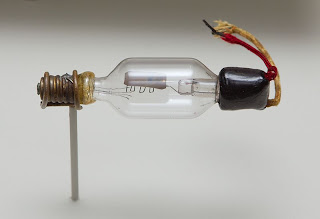 Electronics affect so much of our daily lives. Right now, you’re reading this on your computer, an advanced electronic device.
Electronics affect so much of our daily lives. Right now, you’re reading this on your computer, an advanced electronic device.
We’re surrounded by electronics but few stop to think how it all began. This month, we’re taking you back to the past, way back. To the roots of everything you see on this site and in your daily life.
This September, we’ll look at how electronics have evolved since their invention, to their domination in our daily lives. I’ve also got a couple of surprises in store. Today, we’ll be turning back the clock all the way to the birth of the modern world.
The Invention of Electrical Communications
The invention of electronics can’t be traced back to one individual or time. Individual components came about from a slew of inventors over a span of 100 years. The first electrical communication devices were telegraphs, dating as far back as 1806. Samuel Morse perfected the design in 1844. The devices used a battery and key to send varied electrical signals through a cable. While primitive, they were the first electrical communication devices.
In 1876, Elisha Grey and Alexandre Graham Bell simultaneously invented an electrical device for two way voice telegraphy. Bell called his invention the “telephone”.
By 1890, Nikola Tesla began working on a concept for wireless transmission of messages. In 1894, Indian physicist Jagadish Chandra Bose began experimenting with UHF signals for communication.
Italian inventor Guglielmo Marconi began sending signals a distance of 1.5km in 1895. Other inventors such as Russian Alexander Stepanovich Popov began working on similar devices independent of each other.
Marconi’s first radio transmitter used a simple oscillator or spark gap to send signals. The system could send Morse Code using a telegraph key to vary radio pulses. His simple receiver used a coherer, a glass tube with metal filings inside that could detect radio waves. The filings were connected with electrodes.
Early radios couldn’t amplify signals to send or receive communication over long distances. This made transatlantic and ship-to-shore communications difficult. In 1906, eccentric inventor Lee De Forest began working on the problem.
The Rise of True Electronics
Diodes had existed for some time prior. The principals of a thermionic diode were discovered in 1876 by British physicist Frederick Guthrie. Thomas Edison expanded on his research. The devices consisted of a cathode and anode inside an airless glass envelope. The device could limit the flow of electricity to one direction. Some of the first applications of diodes were radio detectors, such as the coherer. However, they couldn’t amplify the signal and make them usable over long distances. The earliest radio transmitters used powerful generators and very high voltages to send signals across the oceans.
Lee De Forest took the basic diode and added a third electrode between the anode and cathode. He discovered that this amplified the electrical signal. De Forest stumbled upon the principle simply by tinkering, and in fact didn’t know why this happened. He called his device the “audion”. The rest of the world called it the “triode”.
De Forest completed the first successful ship-to-shore radio transmission in 1907. By 1912, radio became a fixture on-board ocean going ships. The Titanic famously used a Marconi system to send distress signals after striking an ice berg in April of that year.
With the audion, radio engineers had a way of controlling and amplifying electrical signals. These early signals still used spark gap transmission, which spammed the entire radio spectrum. In 1906, Canadian inventor Reginald Fessenden began working on a radio system that used amplitude modulation. It worked by sending signal at a specific frequency. Communication was achieved by varying the voltage of the radio wave rather than electrical pulses. American radio pioneer Charles “Doc” Herrold began sending weekly AM broadcasts out of San Jose, California in 1909.
By the 1920s, De Fortest’s vacuum tube triode was becoming a household staple. The first commercial radio station launched in Montreal, Quebec on May 20th, 1920. Interest in home electronics exploded.
Work continued on improving the radio. Originally, AM radio receivers required three different batteries to run them. Each of the vacuum tubes required their own specific direct current voltages. Many of them were kit builds, involving a hodgepodge of parts. This made the systems bulky and complicated.
Canadian inventor Edward S. Rogers Sr. began exploring ways to run radios off mains electricity. After examining US designs, Rogers invented a new type of vacuum tube that could run off alternating current. In 1924, he introduced the Rogers Batteryless Radio. The device was the first to use a standard wall socket. Top of the line models began selling in 1925 for $370, worth about $4,800 in today’s money. The system was the first to make radio simple and easy to use for the average homeowner.
Rogers went on to found the Standard Radio Company, later named the Rogers Vacuum Tube Company, to make the radios. He founded Toronto radio station CFRB to sell these radios.
How does a Rogers Batteryless radio work? In our next article, we’ll be taking a closer look at this revolutionary device.





